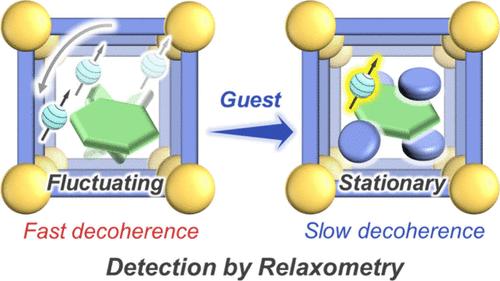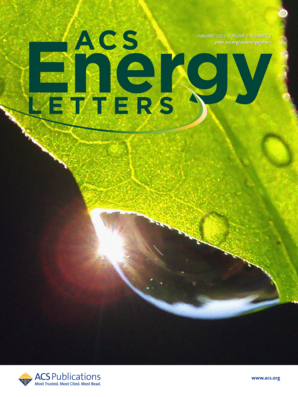走向量子鼻子:基于金属有机框架中分子管的量子化学传感技术
IF 19.3
1区 材料科学
Q1 CHEMISTRY, PHYSICAL
引用次数: 0
摘要
量子传感利用量子特性来提高传感器的灵敏度和分辨率,使其超越经典传感极限。量子传感器,如钻石缺陷中心,已被开发用于检测各种物理特性,包括磁场和温度。然而,缺陷的自旋被埋藏在致密的固体中,很难与分子分析物发生强烈的相互作用。因此,人们将纳米多孔材料与分子的电子自旋中心(分子量子位)结合起来,制造出可以分辨各种化学物质的量子化学传感器。分子量子位具有统一的结构,其特性可以通过改变化学结构来精确控制。金属有机框架(MOFs)具有孔隙率高、结构规整和可设计性强等特点,适合用于支持分子量子比特。分子量子位可以插入 MOF 结构中,也可以作为客体分子吸附。暴露在 MOF 中的量子比特可与分析物相互作用,从而提供一个有效且可调整的传感平台。本文章由计算机程序翻译,如有差异,请以英文原文为准。

Toward Quantum Noses: Quantum Chemosensing Based on Molecular Qubits in Metal–Organic Frameworks
Quantum sensing leverages quantum properties to enhance the sensitivity and resolution of sensors beyond their classical sensing limits. Quantum sensors, such as diamond defect centers, have been developed to detect various physical properties, including magnetic fields and temperature. However, the spins of defects are buried within dense solids, making it difficult for them to strongly interact with molecular analytes. Therefore, nanoporous materials have been implemented in combination with electron spin center of molecules (molecular qubits) to produce quantum chemosensors that can distinguish various chemical substances. Molecular qubits have a uniform structure, and their properties can be precisely controlled by changing their chemical structure. Metal–organic frameworks (MOFs) are suitable for supporting molecular qubits because of their high porosity, structural regularity, and designability. Molecular qubits can be inserted in the MOF structures or adsorbed as guest molecules. The qubits in the MOF can interact with analytes upon exposure, providing an effective and tunable sensing platform.
求助全文
通过发布文献求助,成功后即可免费获取论文全文。
去求助
来源期刊

ACS Energy Letters
Energy-Renewable Energy, Sustainability and the Environment
CiteScore
31.20
自引率
5.00%
发文量
469
审稿时长
1 months
期刊介绍:
ACS Energy Letters is a monthly journal that publishes papers reporting new scientific advances in energy research. The journal focuses on topics that are of interest to scientists working in the fundamental and applied sciences. Rapid publication is a central criterion for acceptance, and the journal is known for its quick publication times, with an average of 4-6 weeks from submission to web publication in As Soon As Publishable format.
ACS Energy Letters is ranked as the number one journal in the Web of Science Electrochemistry category. It also ranks within the top 10 journals for Physical Chemistry, Energy & Fuels, and Nanoscience & Nanotechnology.
The journal offers several types of articles, including Letters, Energy Express, Perspectives, Reviews, Editorials, Viewpoints and Energy Focus. Additionally, authors have the option to submit videos that summarize or support the information presented in a Perspective or Review article, which can be highlighted on the journal's website. ACS Energy Letters is abstracted and indexed in Chemical Abstracts Service/SciFinder, EBSCO-summon, PubMed, Web of Science, Scopus and Portico.
 求助内容:
求助内容: 应助结果提醒方式:
应助结果提醒方式:


